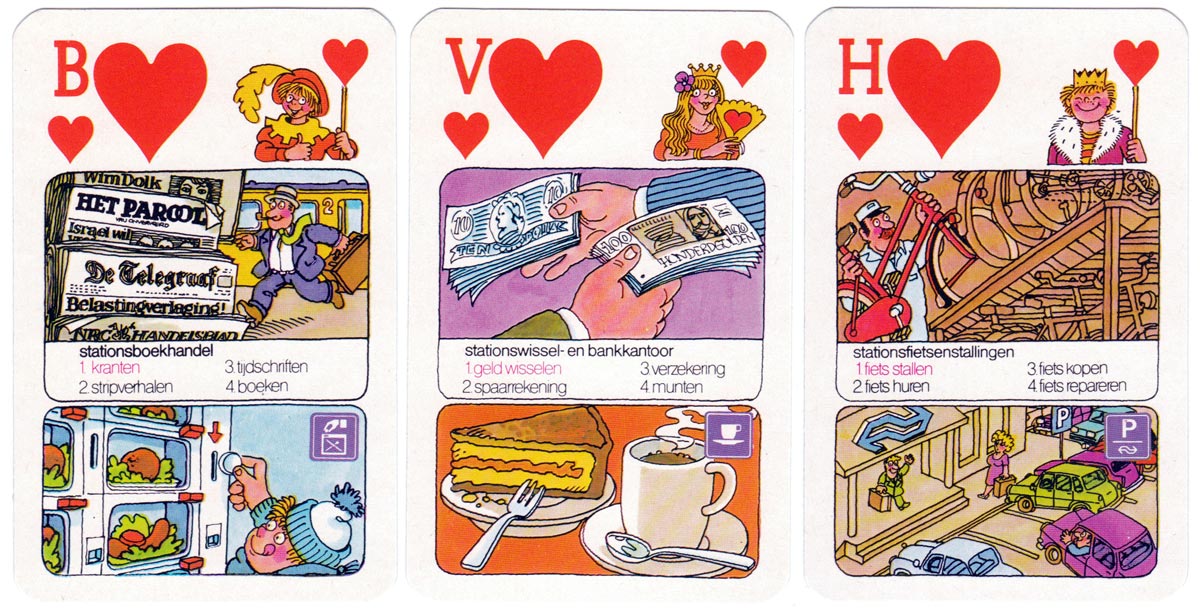Stationskwartetspel
Railway Stations quartet game illustrated by Wim Dolk and published by Servex BV, Utrecht, 1975.
Stationskwartetspel (Railway Stations quartet game) illustrated by Wim Dolk and published by Servex BV, Utrecht, 1975. Servex owns and manages over 400 railway stations in the Netherlands, including station management, hospitality and catering, etc. more►
See the Rules►
[[$gallery?xl=`1`]]
Above: Stationskwartetspel (Railway Stations quartet game) illustrated by Wim Dolk, published by Servex BV, Utrecht, 1975.
Note from Roddy Somerville
There is more to this pack than meets the eye. As it says on the box in Dutch, this is a three-in-one game ("Drie In Een Spel"). Traditional markings appear at the top (with court card indices in Dutch). In the middle are cartoons for a quartet game. At the bottom are 26 further cartoons, each appearing twice throughout the pack, for a pairs game. On each ace, there is a small black-and-white drawing of a Dutch railway station (Amsterdam, Rotterdam, Maastricht and Groningen). In addition, one has to suppose that the pack may have been sponsored by Kellogg's and Wrigley's, given the number of times their names/logos appear. RS

Above: some of the court cards and aces, the Joker, and the box

By Rex Pitts (1940-2021)
Member since January 30, 2009
Rex's main interest was in card games, because, he said, they were cheap and easy to get hold of in his early days of collecting. He is well known for his extensive knowledge of Pepys games and his book is on the bookshelves of many.
His other interest was non-standard playing cards. He also had collections of sheet music, music CDs, models of London buses, London Transport timetables and maps and other objects that intrigued him.
Rex had a chequered career at school. He was expelled twice, on one occasion for smoking! Despite this he trained as a radio engineer and worked for the BBC in the World Service.
Later he moved into sales and worked for a firm that made all kinds of packaging, a job he enjoyed until his retirement. He became an expert on boxes and would always investigate those that held his cards. He could always recognize a box made for Pepys, which were the same as those of Alf Cooke’s Universal Playing Card Company, who printed the card games. This interest changed into an ability to make and mend boxes, which he did with great dexterity. He loved this kind of handicraft work.
His dexterity of hand and eye soon led to his making card games of his own design. He spent hours and hours carefully cutting them out and colouring them by hand.
Related Articles
Most Popular
Our top articles from the past 28 days
























